 | E-mail to Birds Korea |
 | KWBS |
in the Region
 | The Oriental Bird Club |
 | BirdLife International (Asia) |
October
Warm (typically between 15-20°C mid-month), with often excellent birding weather: dry, sunny, and relatively calm. Occasional rain, although uncomfortable for birdwatchers, can produce excellent falls. One of the best times to be birding in Korea!
Autumn migration is in full swing, and anything is possible! Black-faced Spoonbill and Chinese Egret are still reasonably widespread. Hooded and White-naped Cranes start moving south into Korea, with several thousand in the DMZ. Huge concentrations of Tundra Beans and Greater White-fronted Geese form at the Han-Imjin and Seosan. The charismatic Baikal Teal arrives in force mid-month, with up to 200 000 at Seosan! Raptor migration is often strong, with Grey-faced Buzzards (day peak of 1 500 on Gageo island), Oriental Honey Buzzards, the occasional eagle (especially Greater Spotted), Northern Hobby, and the odd Amur Falcon.
Shorebirds are still present in good numbers and diversity, with a peak in Nordmann's Greenshank. Visible migration peaks with Olive-backed Pipits becoming very numerous by mid-month along the west coast, plus excellent numbers of buntings and flycatchers. Pale, White's, and small numbers of Dusky Thrushes are also on the move, along with the first of the typical winter passerines, Brambling and Siskin.
(The following records are a compilation of our own sightings and records sent in by other observers. As well as being posted on the Birds Korea website(s), selected records are also forwarded to other Korean-language birding websites; records of threatened species are arranged and forwarded to Birdlife International and national authorities when appropriate; flag images and records are passed to bodies responsible for their coordination throughout the flyway; and all records sent to us are used to compile annual reports and to support the evolving understanding of the status of many of Korea’s birds.)
SHRIKES. Sightings in South Korea this year have thrown up a number of very interesting questions regarding shrike identification in northern Asia. We now have three discussion papers online: Brown Shrikes, Presumed Steppe Grey Shrike, and Red-backed Shrike. As always, we would welcome comment and input from experienced observers.
MONGOLIAN GULLS. A German research team has flagged a number of Mongolian Gulls on their breeding grounds, and are requesting any details of winter sightings. Go to: Wing-flagged Mongolian Gulls.
Ferry and Socheong Island, October 31

Socheong Ferry, © Nial Moores
Continuing clear and almost calm, though hazy with visibility of only 10 to 15 km. Few surprises on the ferry, but excellent numbers of both Black-legged Kittiwake (ca 3 800 counted) and Pomarine Jaeger (82), with single Parasitic Jaeger and Flesh-footed Shearwater logged as well as the personal first Ancient Murrelets of the autumn (ca 24).
On the island itself very few grounded migrants, where the best birds were alll logged passing over in a 30-minute period, with a juvenile Pied Harrier, a House Swift and 3 juvenile Black Stork. Other birds of note included ca 8 Light-vented Bulbul still, and good numbers of accipiters, Common and ca 5 Upland Buzzards.
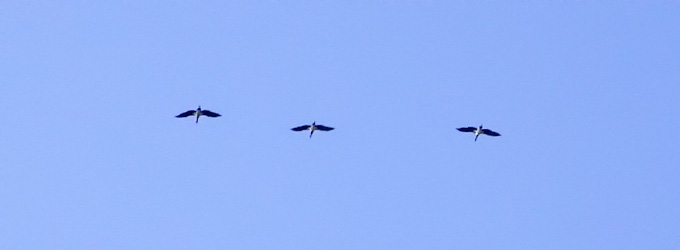
Dongjin River (Saemangeum) and Seosan Lake A, October 30
Fog banks and a too rapidly-receding tide at the Dongjin meant few late shorebirds logged, with e.g only single Mongolian, 5 Pacific Golden Plovers and ca 6 Terek Sandpiper seen. However, a total of ca 5000 Rook with small numbers of Daurian Jackdaw admixed, excellent views of Japanese Lark, a distant flock of ca 15 Black-faced Spoonbill, a briefly-glimpsed Bluethroat, and best of all a very early first-winter Relict Gull more than compensated.
At Seosan, similar numbers of waterbirds, including the Oriental White Stork, with the addition of ca 4 Lesser White-fronted Goose, now ca 65 Hooded Crane and possibly 3 Common Cranes (2 adults and a juvenile type).
Imjingak and Ganghwa, October 29 (until 1300)
Limited time in the field, but some excellent birds, including ca 300 Rustic Bunting and a single very-well plumaged male Pine Bunting at Imjingak; ca 30 White-naped Crane and 500 Swan Goose at a couple of points on the Han-Imjin river; a flock of 1200 Rook containing 30 Daurian Jackdaw en route to Ganghwa, followed by decent views of half-a-dozen Baikal Teal and a very confiding Korean Bush Warbler.
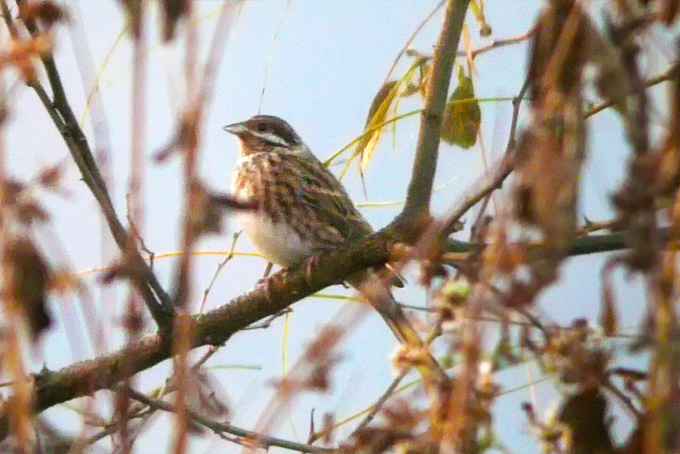
Geum River and Seosan, October 28
A great day, with ca 80 species logged (70 by all 4 of us). Highlights included good views and numbers of Yellow-throated Bunting (100+) and a Dusky Thrush in Gunsan, 2 Upland Buzzard and a Goshawk on the Taean coast, followed by 2 Snow Goose, and in the late evening 2 Common and 45 Hooded Cranes (plus a possible Sandhill), an Oriental White Stork and huge numbers of waterbirds at Seosan Lake A (e.g. very approximately 300 000 Baikal Teal, 30 000 serrirostris Bean and 15 000 Greater White-fronted Geese).
Other late migrants recorded by NM at Seosan included a Ruddy-breasted Crake, a Yellow Bittern and an Oriental Reed Warbler.
Okku in Saemanguem tidal flat, October 28
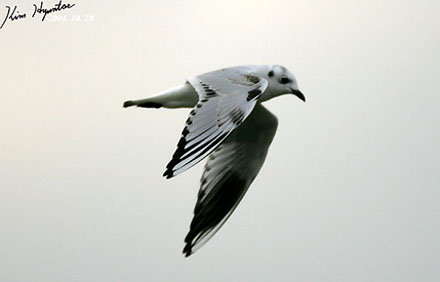
21 Saunder's Gull.
Junam Reservoir, October 27
15 White-naped Cranes and 3 Hooded Cranes.
Haepyung myon in Gumi, October 27
With the temperature dropping in South Korea there has been a mass arrival of Hooded Cranes, with numbers at Gumi climbing to 2,200 as birds landed there from 3 to 5:30 p.m. (the day before there had been just 60, and on the 19th only 11 were recorded).
Busan to Gunsan, October 27

Nial Moores, taking a bus between Busan and Gunsan, today found 3 adult male Scaly-sided Mergansers on a river behind a main Service Station when the bus stopped for a 10 minute "pit-stop" - a classic example of the unexpected and wonderful nature of Korean birding.
Seosan, October 26
Amongst highlights, 1 Oriental White Stork and 55 Hooded Crane on Lake A towards dusk.
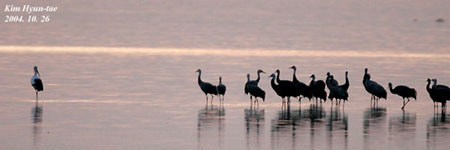
Heuksan Island, October 24 - 26
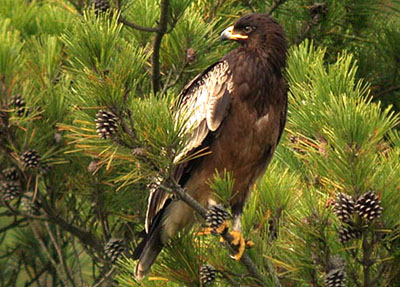
2 Greater Spotted Eagle, also 1 Greater Spotted Eagle on Hong island.
Ganghwa Island, October 23
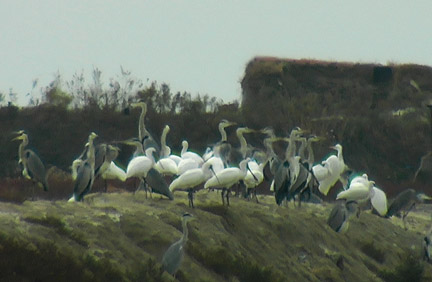
Ganghwa. © JUNG Jae Heum
High counts of 77 Black faced Spoonbill in the shrimp nursery on Ganghwa and 97 Black faced Spoonbill on Gakshi island near Bunoridondae
Gwangeung Arboretum, October 24
Amongst highlights of a trip to ROK was a Solitary Snipe seen feeding in the river upstream from the bridge close to the main entrance.
Saemangeum Area, October 24
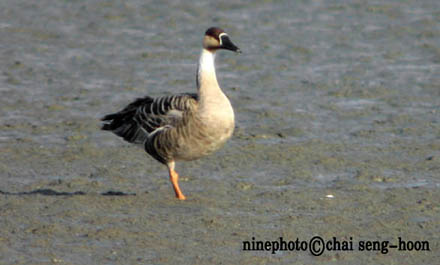

Geum and Dongjin Rivers. © CHAI seng-hoon. (Images used with permission)
On the Geum River, 1000 Baikal Teal and 2 Swan Goose. On the Mangyeung, 12 White Spoonbill and a Chinese Grey Shrike.
Later in the day 16 White Spoonbill on the Dongjin River (possibly the same group as seen earlier).
Haepyeong, Gumi, October 24
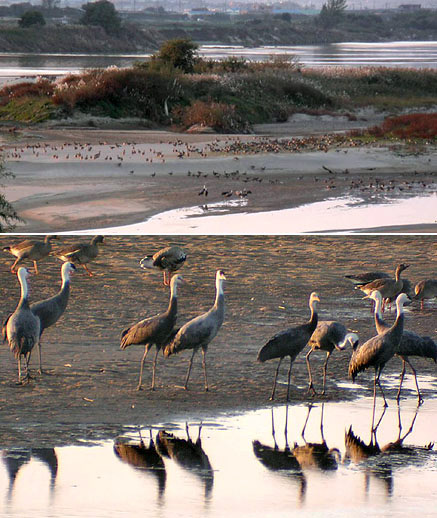
At 4:55 PM 8 Hooded Cranes (six adults and two juveniles) landed at the Nakdong river near Haepyeong in Gumi (Gyeongsangbuk-do). One of the juvenile's bill was clearly more reddish than the others, maybe a bit exaggerated by the sunset. Also around 400 (mostly) Greater White Fronted Geese were near the same site (no geese were found in the area on Oct 22nd).
Geum River and Gunsan vicinity, October 24
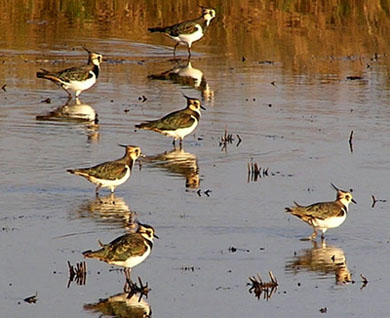
There were a few first views of the season today and a couple of rarities to liven up the pleasant fall afternoon. Great Crested Grebe, White (Eurasian) Spoonbills (33 at Hwoe-hyun), Greater White-fronted Geese, Pochard, Tufted Duck and the season's first Northern Lapwings, 38 in number in a flooded field near the industrial area. A single Grey Tattler was seen. Olive-backed Pipits were heard widely and one was sighted on a wire for a good view. Numerous Bull-headed Shrikes were in view. Bramblings and Siskins have returned. Saunders' Gulls were in small numbers at the Keum Estuary.
Although only briefly, we were happy to see a Water Rail fly close by at the Geum.
Song Island, October 23
33 Black-faced Spoonbills
Socheong Island, October 19
Clear skies and light southeasterlies suprisingly produced alot of bird activity in the first few hours of the morning, with a flock of 30 Great Tit making a brief foray out to sea, 10 Chinese/Light-vented Bulbul repeatedly circling high into the sky at the lighthouse (before noisily crashing back into bushes), and increased numbers of e.g. Oriental Greenfinch (30) and Brambling (ca 20), along with the rather commoner Chestnut (40) and Black-faced Buntings (50) and Olive-backed Pipit (100+). Grounded passerines included several calling Siberian Rubythroat (one even bursting into song), ca 10 Grey-backed Thrush and a single Red-throated/Taiga Flycatcher.
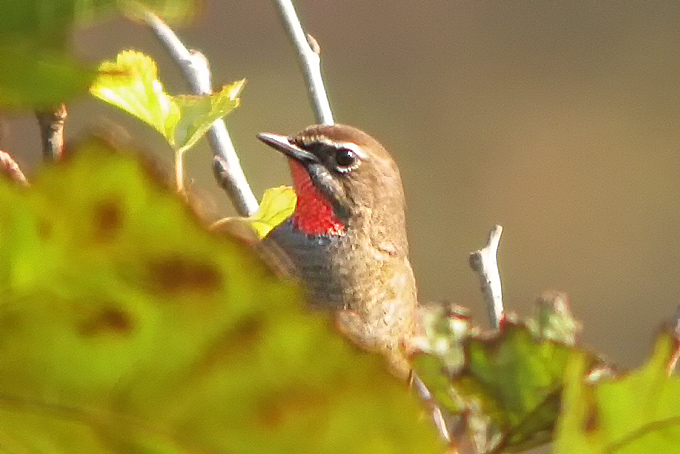
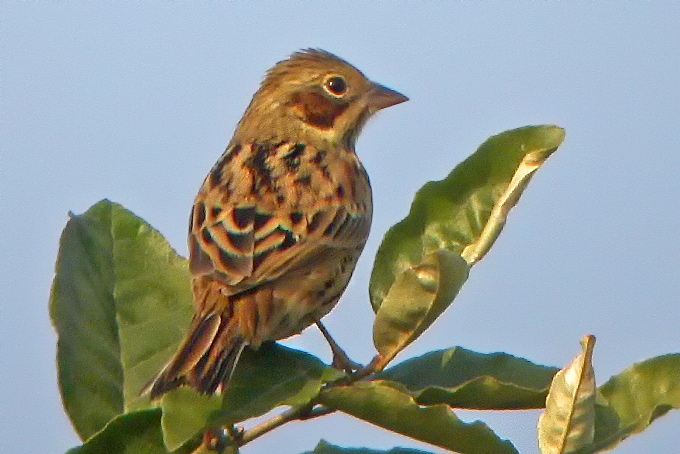

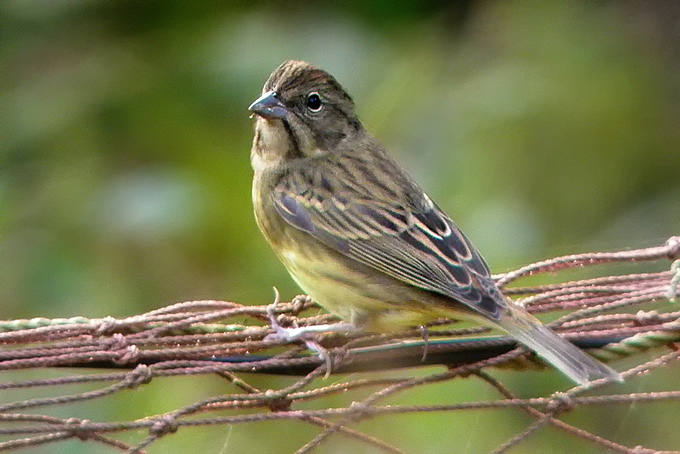
The ferry journey back to Incheon produced 42 Pomarine Jaeger, 1 or 2 South Polar Skua, and a staggering 5 500 + Black-tailed Gull (many crowding around fishing boats one hour west of Incheon).
Additional species of note were ca 50 plus taimyrensis, a single large cetacean (perhaps ca 4 m in length with a small dorsal fin), and a pod of probably 30 Finless Porpoise.
Socheong Island, October 18
Light overcast through the night even resulted in a very few spots of rain at dawn...before disappointingly clearing again to become largely sunny by afternoon.Off the lighthouse a single, slow scan produced a single Spotted Seal, 2 or 3 Finless Porpoise, 10 Streaked and single Flesh-footed and Slender-billed Shearwaters, 5 Pomarine Jaeger and over 900 Black-legged Kittiwake along with 250 Black-tailed, single taimyrensis, 2 Vega, and 5 Mongolian Gulls!
On the island itself, Olive-backed Pipit were a little more numerous (ca 150), while there were also single Pechora Pipit, at least 15 Chestnut-flanked White-eye and now up to 25 Yellow-throated Bunting.
Although raptor passage was slow, it included single Amur, Upland Buzzard, Osprey and Hen Harrier, and (yet) another odd buzzard: this one dark-throated like many japonicus, but with obvious off-white primary bases, a whitish tail base, and a biege or soft rufous-brown toned tail, with a broad subterminal band.
Socheong Island, October 17
Another morning of sunny skies, though with low visibility and increasing cloud cover during the day, as well as moderately strong (Beaufort 4) southeast winds. Most warblers apparently departed overnight, but interestingly one Pallas's Leaf Warbler seen well showed a straight black eye-line (without "hook") and rather pale lower "face". However, in other respects, the bird appeared typical (e.g. with a bright amber-tone to the flared supercilium; a full-length median crown stripe; an all-black bill; and rather contrasting silky white underparts and bright upperparts).
Other species of note included still 320 Black-legged Kittiwake, ca 25 ocularis White Wagtail, and late single (presumed) Swinhoe's Snipe, Pacific Swift, Chinese Grosbeak and Asian Stubtail.
Flag Sighting:
One Great Knot Calidris tenuirostris was sighted by Arthur and Sheryl Keates at: Between Lee Point and Buffalo Creek, NT, Australia 12deg 20min 0sec S, 130deg 54min 0sec E on 16/10/2004 with flag(s) as follows:
LEFT leg: white flag on tibia (upper) above orange flag on tarsus; RIGHT leg: nothing/unknown on tibia (upper) above nothing/unknown on tarsus
This bird was flagged in Korean Peninsula, approximate co-ordinates 36deg min S, 126deg 40min E, which uses the flag combination White/Orange, sometime since 1998.
The resighting was a distance of approximately 5392 km, with a bearing of 174 degrees, from the marking location.
Plumage described as: Trace.
The flagged individual was seen in a flock of 1800, composed of both Great Knot and Red Knot. What was possibly the same bird was seen by the same observers at the same location, on 02/10/2004.
Cheon-su Bay Area, October 17
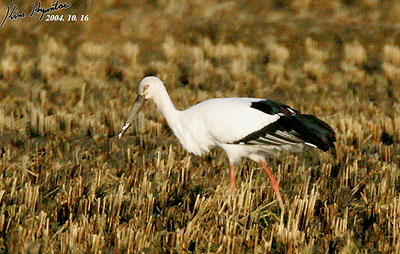
Thanks to Kim Hyun-tae for guiding us through some high quality locations. Among the thousands of Bean and Greater White-fronted Geese we saw a single Snow Goose well. It was good day for Raptors. In the open country away from the water we watched a Black Kite. A Greater Spotted Eagle was noted by Peter Nebel. One female Hen Harrier, gave several good looks as it hunted in our vicinity. We all enjoyed an encounter with a Common Buzzard, Peregrine Falcon and a Goshawk sparring over a copse of trees. A few Sand Martins were apparent in a mix of Swallows. In a cut rice field an Oriental White Stork was feeding. Also of note, multiple Crested Larks were seen singing and displaying in a rocky field.
Youngam Lake, October 17
20,000-30,000 Baikal Teal.
Song Island, October 17
34 Black faced Spoonbill
Socheong Island, October 16
Continuing sunny and almost calm, with only light southwesterly winds, and poor visibility. Birds seemed to become more active and numerous through the day (perhaps in part due to the relative scarcity of migrating raptors overhead), and the first Rustic Bunting (2) and Tree Sparrow (1) of the autumn were logged. Most numerous were warblers, however, with at least 100 Yellow-browed, 6 Arctic, 15 Pallas's Leaf and 14 Dusky Warblers counted in the afternoon.
Outstanding highlight came very late in the day. While watching a large mixed flock of 20 or 30 leaf warbler feeding around a pool of water, first a Hume's Leaf came into view, followed soon after by what appeared from its yellow rump band to be a Pallas's Leaf.However, as the warbler moved closer, it showed a rather narrower supercilium lacking strong yellow tones (rather similar to a Yellow-browed in colour), with an apparently plain green forehead. Checking the rest of the face pattern, it showed a straight, square-ended dark eye-stripe, very pale ear coverts and "face", and a greyish-white median crown stripe beginning only above the eye, and ending on the nape (somewhat sugegsting Eastern Crowned Warbler)...Moving closer, at times in view, at times hidden, further views over the next 3 or 4 minutes revealed a rather longer-looking perhaps pale-based bill (rather different from the many Pallas's watched in previous days), and a rather plainer appearance on the closed wing, with a duller secondary blaze, and plainer-looking tertials especially.Although hard to see on Pallas's Leaf (even with good views), there was also no dark spot apparent below the greater coverts.
Although lacking experience of the species, all the features noted in the field at the time appear to match those given in Robson for Chinese Leaf Warbler Phylloscopus yunnanensis: a rather poorly-known species, and one not previously properly claimed for South Korea!
Mangyeung River, October 15 - 17
Highlights included 3 Spoon-billed Sandpiper (for a WBKE article on this most charismatic shorebird, go to Spoon-billed Sandpiper), 2500 Dunlin and Red-necked Stint - including one carrying a yellow leg flag (indicating it was originally flagged in north-west Australia: go to AWSG Protocol for an explanation of the colours used).

© CHAI seng-hoon

© CHAI seng-hoon
Upo Ramsar site, October 16
140 Eastern Taiga Bean Geese (including 29 1st Winter Juveniles), 600 Eurasian Wigeons, 200 Coots, 400 Common Teal, 200 Mallard and Spot billed Duck and 10 Great Egret (E.a.alba), with 9 Eurasian Skylark, 3 Pacific Golden Plover, 3 Spotted Redshank, 1 Greenshank, and 1 Winter Wren.
Seosan, October 16
Among highlights on Kim Hyun-tae's website, this superb compilation image of four different Greater Spotted Eagles.
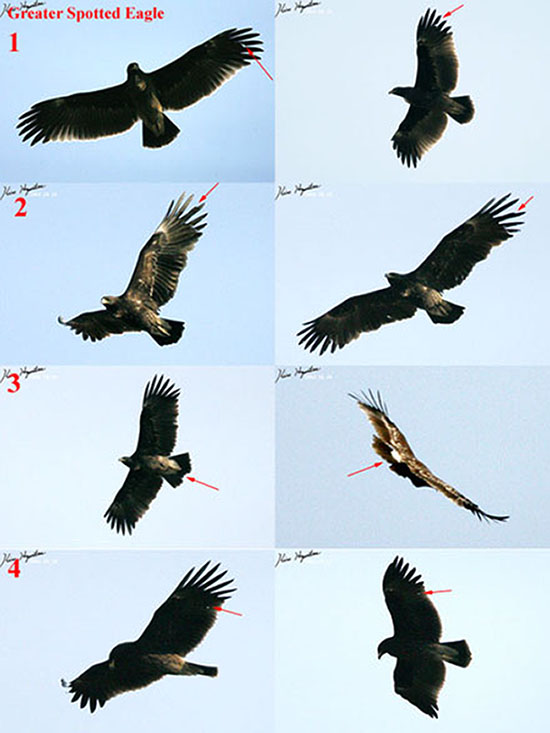
Socheong Island, October 15
Light westerly winds and sunny, though with yellow dust reducing visibility to less than 15 Km during the day...
A good range of species included 8 species of bunting, the personal first Winter Wren of the autumn, ca 15 Chinese/Light-vented Bulbul and 23 Chestnut-flanked White-eye still, 10 Red-flanked Bluetail and 8 Daurian Redstart, 15 Korean Bush, 10 Dusky, and 70 Yellow-browed Warblers, while highlights were a single calling Hume's Leaf Warbler (also first of the autumn of this rather scarce species in Korea) and a staggering 2 200 Black-legged Kittiwake sitting on the sea off the lighthouse...as last year, the flock was comprised effectively entirely of adults (only 1 probable first winter seen distantly!).
Socheong Island, October 14
Very strong northerly winds overnight weakened during the day, leaving the afternoon calm and sunny...Some diurnal movement still in progress with 4 Ruddy Shelduck, 2 or 4 Daurian Jackdaw and a single Pallas's Reed Bunting all firsts of the autumn on the island. A weak raptor passage also included a single Amur and an Upland Buzzard, while at least 900 Barn and 400 Red-rumped/Striated Swallows passed through.
Gyungpo Lake, October 13
4 Silky Starling.
Socheong Island, October 13
The long-awaited passage of a rain-bearing cold front produced only 10 minutes of light rain, before clear skies returned. Numbers of migrants, however, still appeared reasonably good, though many species kept deep in cover due perhaps to the large numbers of raptors overhead, including one kettle of 18 Common Buzzard, single Eastern Marsh, Hen and Pied Harrier, 5 Amur Falcon (including one full-adult male), and another one or two Greater Spotted Eagles.
Highlight of the day was the discovery of another Little Owl, this time in "second village", being mobbed for a time by a group of Chinese/Light-vented Bulbul!
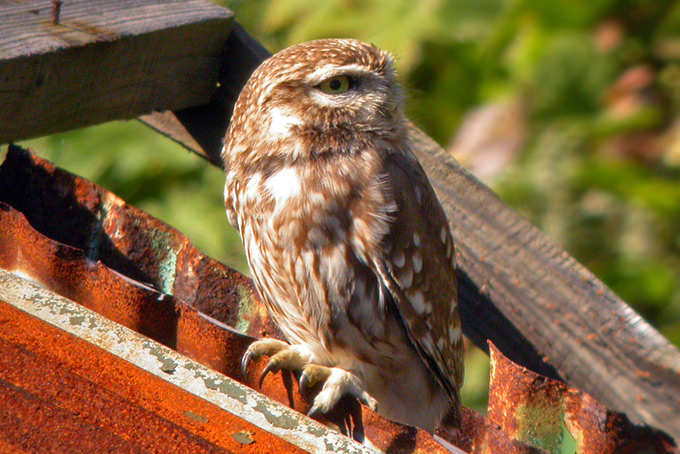
Socheong Island, October 12
Although only a few hours were spent in the field it was evident that migration has shifted from mid-Autumn towards late Autumn.
Raptors included 7 Black Kite through in 3 hours, single Crested Honey Buzzard, Eastern Marsh and Hen Harriers, Amur Falcon and Merlin, while there were over 200 Black-legged Kittiwake counted on the sea.
Personal "wintery" firsts for the autumn included a first winter Dark-throated Thrush (ruficollis), a Vega Gull, and no less than 3 Greater Spotted Eagles.
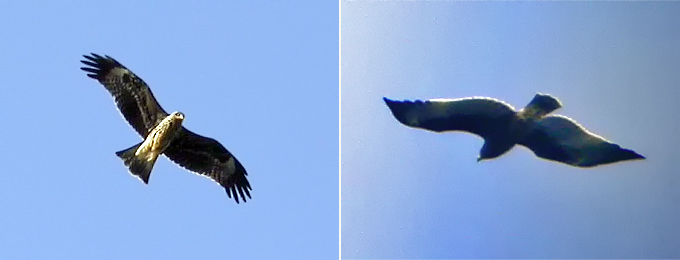
Socheong Island, October 11
With only thin cloud and fog banks instead of the forecast overcast and rain showers, there were few new grounded migrants, with only Pallas' Leaf (8) and Korean Bush Warblers (10) and Siberian Rubythroats (ca25) reaching new highs for this autumn. Other species of note included at least 3 Amur Falcon, a Yellow-legged Buttonquail and at least 12 Chinese Bulbul still.
(For a note on identifying flying migratory raptors, go to ID Notes: Migratory Raptors.)
Ganghwa Island, October 10
182 Black faced Spoonbill
Rice paddy at Dumo ri, Jeju, October 10
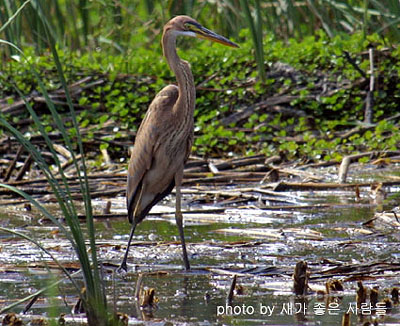
1 Purple Heron.
Seosan, October 10
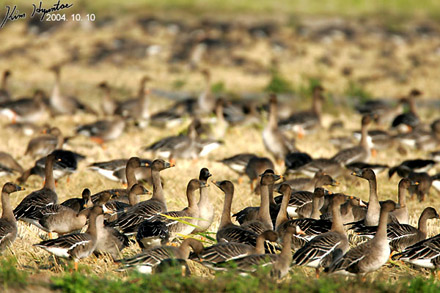
Seosan. © Kim Hyun-tae.
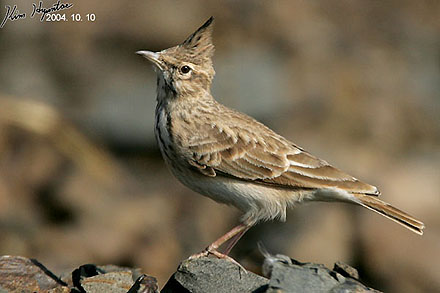
Geese numbers are building now, and a count included 2 Snow Geese and "more than 10000" Greater White-fronted and Thick-billed Beans.
Also on Kim Hyun-tae's website today an excellent short series of photos of the isolated coreensis form of Crested Lark - a potential candidate for elevation to full-species level.
Socheong Island, October 10
Similar to the 9th, though with rather reduced diversity and numbers (e.g. "only" 600 Red-rumped/Lesser Striated Swallow). Again 15 species of raptor were logged, with most numerous being Crested Honey Buzzard (60), Black Kite (54) and Grey-faced Buzzard (34). Species of special note included another Hen and 2 Eastern Marsh Harriers, 26 Northern Goshawk, a late Chinese Sparrowhawk, 4 Upland Buzzard, and a buzzard sp (presumably an oddly coloured Upland, with a comma of white at the base of the primaries, and a rather rufous-toned tail, with many feathers edged grey-white, and an obviously darker subterminal band). Among other migrants, pipits were rather numerous, with ca 120 Olive-backed and 35 Siberian Buff-bellied Pipits logged.
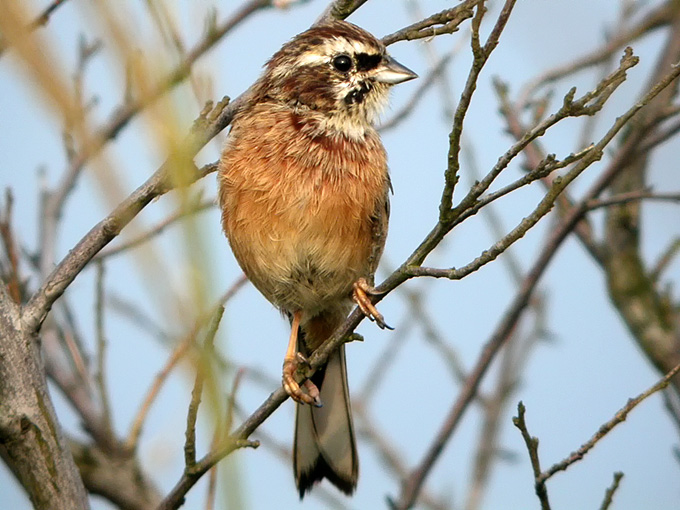
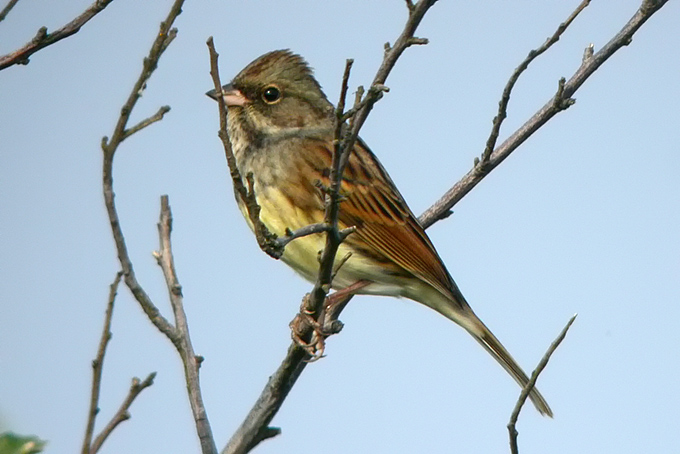
Socheong Island, October 9
With the mist and haze of the past 2 or 3 days lifting, visible migration was much stronger than of late. Best for the day included a very heavy passage of hirundines (with ca 1 600 Barn and 1 900 Red-rumped/Lesser Striated Swallows, as well as possibly 100 Asian House Martin, and 15 species of raptor. Most numerous of these were Crested Honey Buzzard (84), Northern Goshawk (58), and Common Buzzard (35) while other species included 18 Grey-faced Buzzard, the personal first Hen Harrier of the autumn (1), 4 juvenile Pied Harrier, 6 Upland Buzzard (also the personal first of the autumn) and an Amur Falcon.
Other species of note inclued the personal first Daurian Redstart and Long-tailed Rosefinch of the the autumn, along with an increase in Tristram's Bunting up to 20 and Black-faced to 150.
(For a note on identifying flying migratory raptors, go to: ID Notes: Migratory Raptors.)
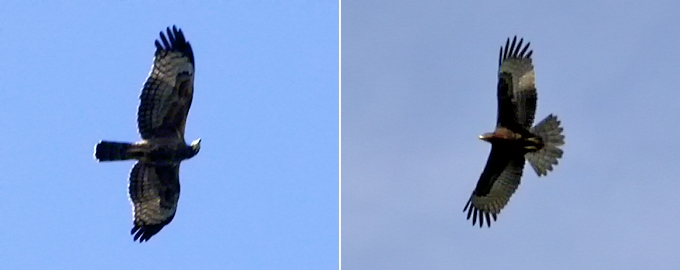
Jeju Island (Jongdalri beach), October 8
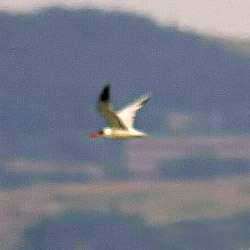
Image used with permission.
1 Caspian Tern. This is about the seventh documented record of Caspian Tern in South Korea, scattered across both spring and autumn.
Flag Sighting:
One Great Knot Calidris tenuirostris was sighted by Arthur and Sheryl Keates at: Lee Point, NT, Australia 12deg 20min 0sec S, 130deg 54min 0sec E on 02/10/2004 with flag(s) as follows:
LEFT leg: white flag on tibia (upper) above orange flag on tarsus; RIGHT leg: nothing/unknown on tibia (upper) above nothing/unknown on tarsus
This bird was flagged in Korean Peninsula, approximate co-ordinates 36deg min S, 126deg 40min E, which uses the flag combination White/Orange, sometime since 1998.
The resighting was a distance of approximately 5392 km, with a bearing of 174 degrees, from the marking location.
Plumage described as: Trace.
The flagged individual was seen in a flock of 4000, composed of both Great Knot and Red Knot and other shorebirds.
Socheong Island, October 7
Dense fog patches at sea level, but largely clear skies overhead, and only very light westerly winds. Similar bird-wise to the past few days, though with better numbers of Siberian Rubythroat (at least 20, almost all of which were males!) and Grey-backed Thrush (ca 15). Few obvious highlights, with only Bluethroat being the personal first of the autumn, and one very obvious low point...a locustella warbler watched for only ca 10 seconds as it sat near the base of a low tree appeared to be a River Warbler (i.e it was dark brown above, with only a weak supercilium and pale eye-ring, and had dark flanks washed grey-olive brown, a double band of narrow breast streaks, and long undertail coverts mottled obviously brown and white..), however, it was not photographed, and could not be refound to confirm features despite three hours of searching: inadequate views for claiming a first record of such a species.
Socheong Island, October 6
Continuing sunny, calm and clear, though with low-lying mist and fog patches developing. Although diversity was reasonable (with 62 species logged), numbers were rather low, with only 100 Yellow-browed Warbler, 30 Chestnut and 40 Black-faced Buntings being near expected levels for the time of year.
With no sign of yesterday's Paddyfield Warbler (despite much searching) highlights were confined to a Citrine Wagtail (very scarce in autumn), and the personal first Rufous-tailed Robin (4), Mugimaki (3) and Dusky Thrush (1) of the autumn.
Jeju Island (Jongdalri beach), October 6
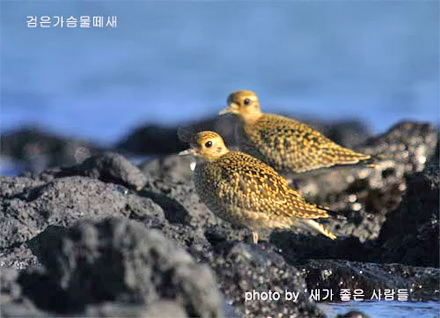
Image used with permission.
Now 2 Spoonbilled Sandpiper on the beach and 3 Pacific Golden Plover.
Socheong Island, October 5
Clear, though with visibility down to ca 30 Km, and fair movement out NW in the early morning. In one sample hour (0800-0900), most numerous were Chestnut Bunting (83) and Olive-backed Pipit (76), with lesser numbers of Black-faced, Yellow-breasted, Chestnut-eared and Meadow Bunting also mixed in. In addition, at least 22 Yellow-browed Warbler were counted flying out to sea (with another 50 in trees nearby), along with probably 4 different Zitting Cisticola.
Outstanding highlight came when searching a grassy headland. While watching a Black-browed Reed Warbler, another reed warbler flew out of long grasses next to it to give very good but brief views. Immediately recognisable as either a Manchurian Reed or a Paddyfield (based on its reasonable primary projection, darkish-centered tertials and supercilium extending rather obviously behind the eye), views of the bill revealed a very well-defined dark tip to the lower mandible, apparently considered diagnostic of Paddyfield Warbler. Structurally, it looked fairly small-billed and long-tailed (though not as long-tailed as the Manchurian Reed seen on Gageo Island in Oct 2000 New Korean Species: Manchurian Reed Warbler (NM)), while plumage wise, it showed only faintly dark above the supercilium. Fairly dull brown on the upperparts (not so dissimilar to the Black-browed Reed Warbler in direct comparison), its rump showed strongly rusty, contrasting with very faintly greyer toned nape and mantle. The underparts appeared mostly dull brownish-buff, lacking ginger or rusty tones.
This is only the second Paddyfield Warbler seen in Korea, following the first found and photographed by Park Jong-Gil on Hong Island on April 08 2004 (Latest Birds April 2004). Although Manchurian Reed is considered much more likely to occur in South Korea, it has surprisingly still only been claimed twice, both times in October (the Gageo Island bird, and one on Socheong Island by Kim Dong-Won in 2002, only 100 m from this morning's sighting!).
Socheong Island, October 4
From the ferry, 1400 Black-tailed, 20 Mongolian/Vega and ca 75 Taimyrensis Gulls (the latter mostly in two "pure" flocks of 30 each), 1 Swinhoe's Storm Petrel, 1 200 Streaked Shearwater, 2 South Polar Skua, 2 Parasitic and 49 Pomarine Jaegers.
On the island itself, with continuing clear skies, very good visibility and light north-easterly winds, there were very few grounded migrants to be found in the afternoon, with most interesting probably being 3 Siberian Rubythroat and the personal first Red-flanked Bluetail of the autumn.
Jeju Island (Jongdalri beach), October 4

Image used with permission.
1 juvenile Spoonbilled Sandpiper.
Haenam, October 3
20,000 Baikal Teal
near Seosan, October 3
On Kim Hyun-tae's website today an excellent series of photos of 3 Nordmann's (Spotted) Greenshank with a small flock of other shorebirds including Common Greenshanks and Great Knots.
Also at Seosan were 10,000 Tundra/Thick-billed Bean and Greater White fronted Geese and 150,000 Baikal Teal.
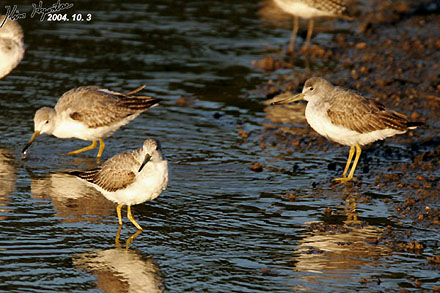
© Kim Hyun-tae

© Kim Hyun-tae
Mangyeong and Geum River Estuary, October 3
On a quick morning trip to Hwoe-hyun we ran into Yellow Breasted Buntings as well as a single Black-faced Bunting along the sea wall reeds. On the flats, Mongolian Plovers and Red-necked Stints seemed abundant. At the Geum Estuary an Osprey was seen for the second Sunday in a row. It was seen successfully snatching a large fish despite the harrassment of Black-headed Gulls. Also, a few Pacific Golden Plovers were seen among the great assembly of birds.
Eocheong Island, October 1
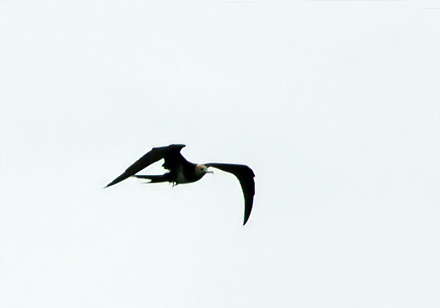
Image used with permission.
1 Lesser Frigatebird.
Any record of frigatebird in Korean waters is noteworthy - and this bird comes shortly after another Lesser was seen from Socheong Island on August 09 (go to Lesser Frigatebird) and the country's first Great Frigatebird on Jeju Island on August 19 (go to Great Frigatebird)





